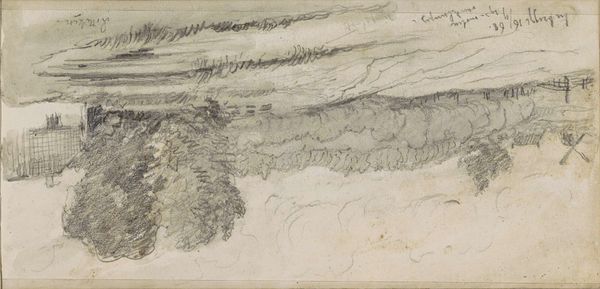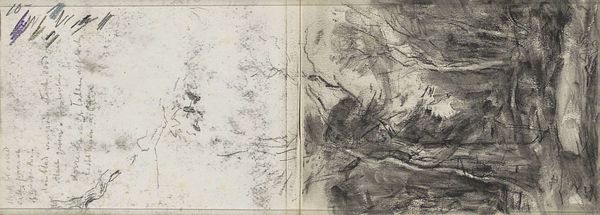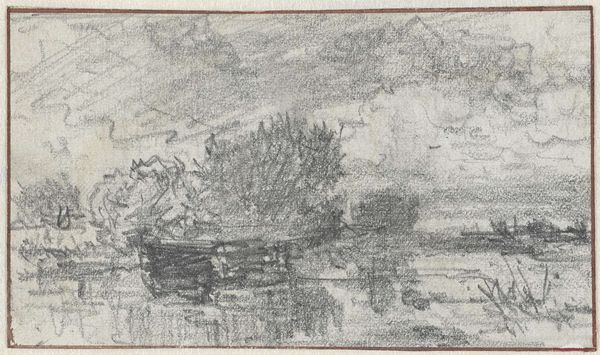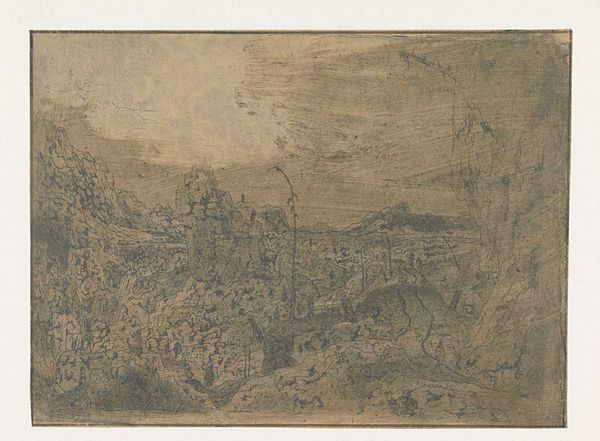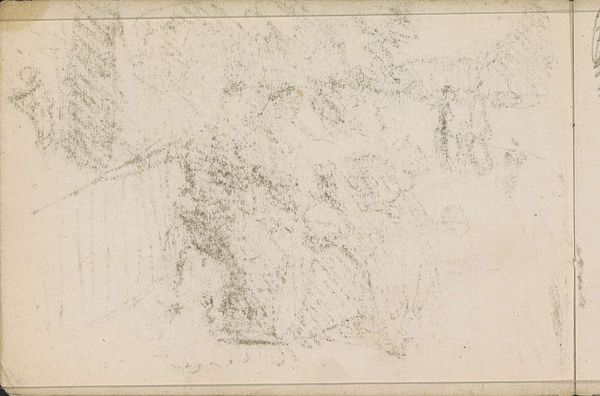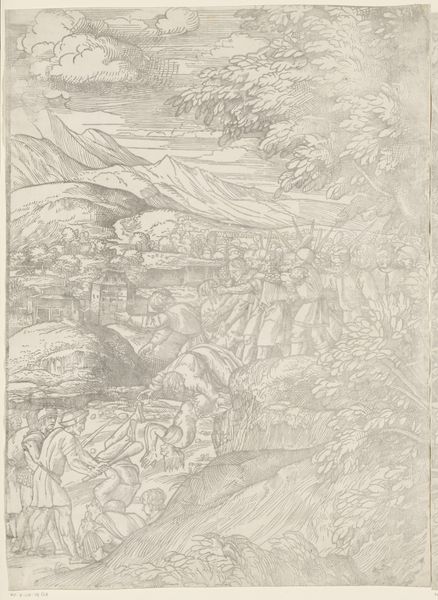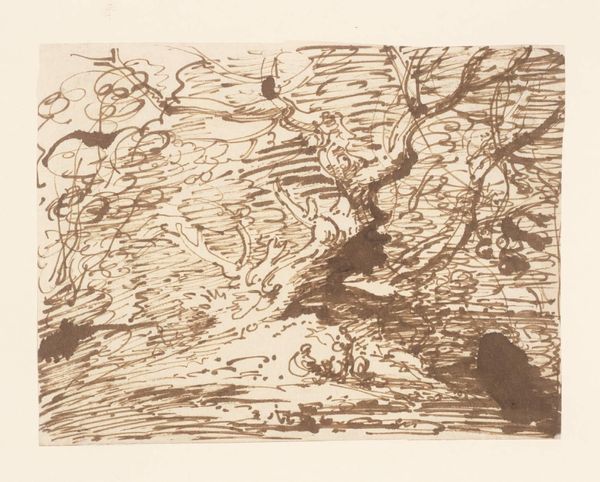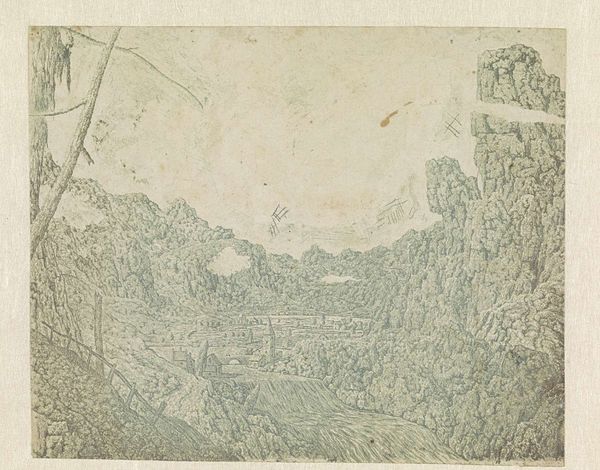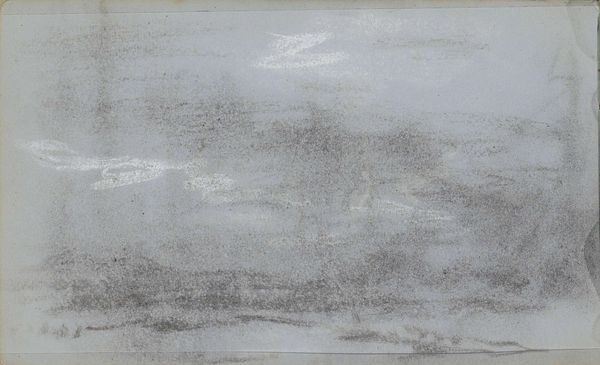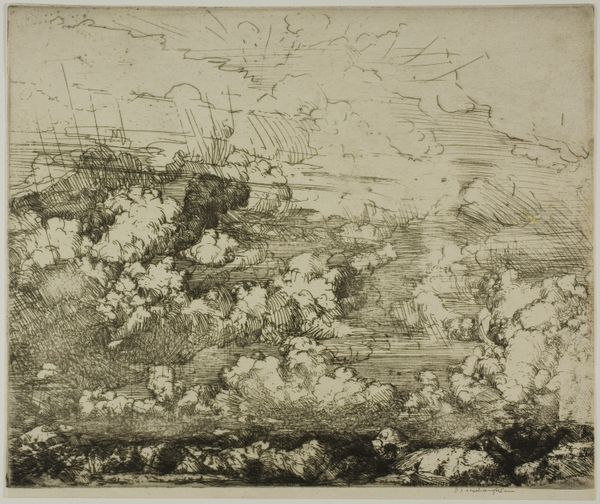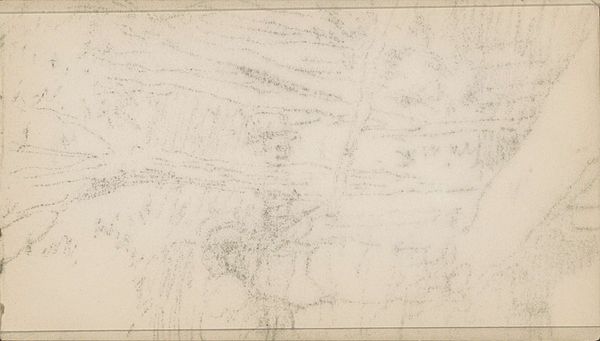
print, etching
# print
#
etching
#
landscape
#
natural texture
#
realism
Dimensions: height 83 mm, width 113 mm
Copyright: Rijks Museum: Open Domain
Curator: "Landschap met visser," or "Landscape with Fisherman," created by Rodolphe Bresdin between 1843 and 1844. It's an etching, a technique Bresdin mastered to conjure these intensely detailed, fantastical scenes. Editor: Wow, that’s intense. It feels like looking into a dream, doesn't it? Kind of unsettling, though. The whole thing seems about to be swallowed by the earth... all that looming foliage. Curator: It’s definitely meant to be evocative. Bresdin was deeply fascinated by the Romantic ideal of nature – not just its beauty, but its wildness and potential for the sublime. He layers symbol upon symbol. Think about the fisherman; the tiny figure against the overwhelming natural world. There's the visual metaphor about our relationship to the environment and also that fisherman motif resonates deeply through mythology and literature as a figure linked to existential seeking. Editor: I like how tiny and almost incidental the figure is! You know, you barely see him, hunched over, just existing. He kind of vanishes into the landscape. Which makes me think about invisibility, maybe irrelevance? Does Bresdin see humankind as ultimately irrelevant? It could be quite the pointed statement. Curator: That tension, that’s very much at the core of Romantic thought and also touches on Realism. He also offers such a density of organic shapes. Think about the gnarly, ancient tree. Its symbolism is linked with time, decay, history... and what it means for the fleeting moment of existence the fisherman and us. Editor: You know, it feels like all this natural texture really speaks to a psychological landscape too. It feels anxious! I think it would’ve been really easy to paint this kind of subject matter really romantically and idealistically. But he seems to be going a different way, offering a realism of feeling, of psychological texture. Curator: Precisely! And the etching itself—with its cross-hatching and intricate lines— contributes to that texture and layered effect. It mirrors the complexity he perceives in nature and mind. Bresdin's technique embodies the depth of this introspection. Editor: Yeah. Actually looking at it now, I see this weird parallel—Bresdin’s tiny marks, echoing nature’s vast patterns...it’s oddly comforting, you know? In the chaos. Thanks for guiding me to actually slow down and see it. Curator: That’s the power of art, isn't it?
Comments
No comments
Be the first to comment and join the conversation on the ultimate creative platform.
